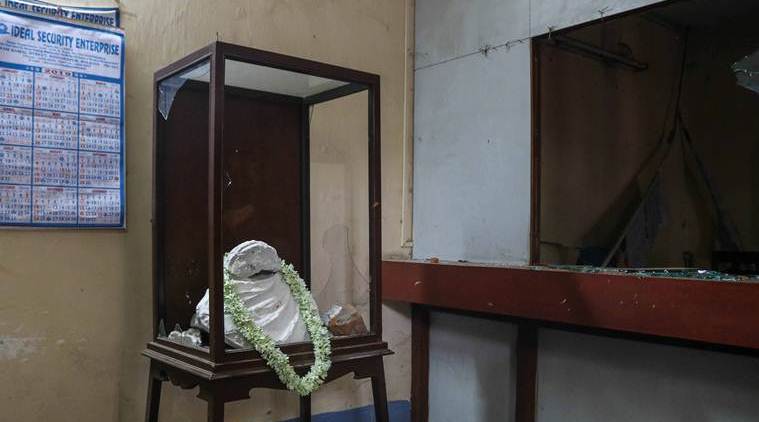
Elevated intellectualism was once a forte of Bengal, and Vidyasagar was one of its most eminent proponents in the 19th century AD. But times have changed.
The Trinamool Congress has alleged that some people associated with Amit Shah’s BJP rally on May 14 evening — in support of local Lok Sabha candidate Rahul Sinha —vandalised a bust of Vidyasagar. This shares a similarity with the desecration of a Vidyasagar statue by the Naxals in the late 1960s: And, since the late 1960s, West Bengal started declining in its intellectual forthrightness. Naxals, still cherished by the Bengali middle class as those who dreamt of changing Bengal into a communist state, had begun by vandalising the statues of towering Bengali intellectuals whose influence still inspires the country. Ishwar Chandra Vidyasagar was the foremost figure against whom the Naxals had a huge grudge. The reason given by them supposedly was that their views did not match with the spirit of liberal thought that Vidyasagar demonstrated in his unique ways of protest against the British Raj and Hindu superstition.
His invoking of the Parasara Samhita to prove widow remarriage as an old Hindu practice in a dogmatic society, and, the establishing of schools and colleges to educate men and women alike are just two initiatives of his from which the entire country drew inspiration. Hence, the shameful act of May 14 — amidst claims and counter claims by the TMC and BJP, and allegations of the incident being “fixed” against both the parties by the Left — demands a closer introspection. Especially since the provocations by and resistance from TMC’s student wing to the election rally is already proven beyond doubt. However, such provocation can’t explain the vandalising of the bust. Neither does anything point to who the culprits were.
Therefore, the truth needs to be established. That is easy provided the CCTV footage of the room in which the bust was placed is made available by the Vidyasagar College authority. One has to first come inside by opening the college building gate (like many old colleges of Bengal, this college does not have a compound outside, the building directly opens into Bidhan Sarani) and then, by opening another wooden door. However, till now, whatever has been claimed as proof from both the sides constitute footage from outside the college, leaving space for concoction and propaganda.
However, Vidyasagar has gradually been sidelined during the last few years in Bengal through the erasure of the Bengali language training’s cultural context — for instance, by selectively changing some text, at the primary level. Replacing the word ramdhanu (rainbow) with rongdhanu (colour bow) is one such example to de-Sanskritise the Bengali language, which goes contrary to Vidyasagar’s way of developing the language. Again, if Vidyasagar — the great crusader for improving the lives of Indian women — is a cultural icon for them, how is the TMC against the annulling of triple talaq for Muslim women?
Is it that in search of a strong issue against the BJP, in the final phase of the Lok Sabha election, mostly in Kolkata, this cultural icon has been resurrected?
BJP, too, needs to identify and punish the persons from the procession who have been seen outside the college participating in the attack to the heritage building. Some intellectuals, within an hour of the incident, at a press conference in the Kolkata Press Club, condemned the attack. Poet Shankha Ghosh, one of the most prominent intellectuals in West Bengal, while criticising the attack of vandalism, did not attribute it to any specific dispensation, which is very significant. An immediate impartial inquiry is needed — let it be taken suo motu at the behest of the High Court of Calcutta — to find out the truth behind this crime against a cultural icon of India.
This article first appeared in the print edition on May 17, 2019 under the title ‘Felling an icon’. The writer is professor at Visva-Bharati University, Santiniketan